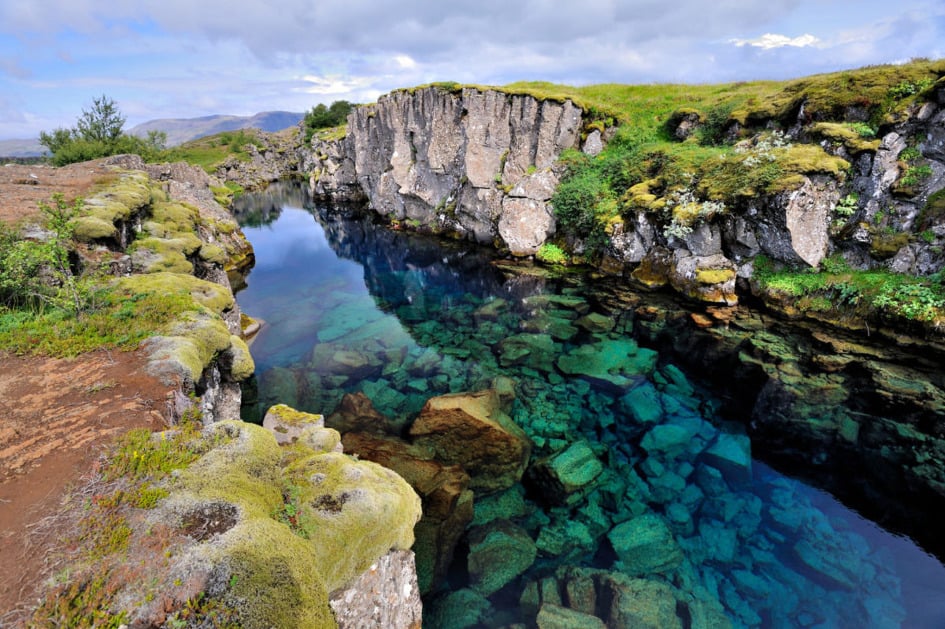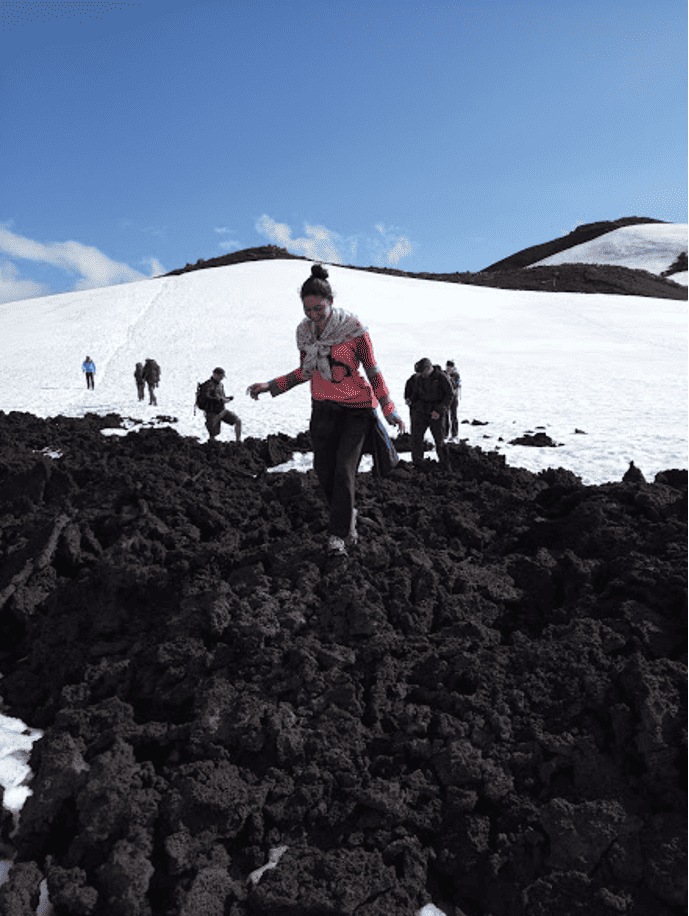Iceland is the country of fire and ice. In this blog post, we focus more on the fire-side of our stunning country.
Iceland is geologically a very young country. It is ‘only’ 20 – 25 million years old and owes its existence to volcanic activity. It first appeared from under the ocean about 16 – 18 million years ago. Our country is still growing each year. Thus, the Euroasian tectonic plate and the North American tectonic plate drift apart each year by 2 – 2,5 centimetres per year. Want to see this from close by? Have a look at our Reykjanes tour, or even better go for a snorkelling tour between these earth plates.

Iceland nowadays has 30 to 40 volcanoes and craters that are still active. That’s why you can expect on average, every 5 years an eruption. A few of the famous volcanoes are Eyjafjallajökull, famous for its eruption and shutting down the air traffic in 2010 because of its massive ash cloud.
Katla is somehow geologically linked to the Eyjafjallajökull. If the Eyjafjallajökull erupts, hold tight and prepare for a powerful and more destructive eruption from Katla. Both volcanoes are completely covered by the Mýrdalsjökull ice cap. If you want to get close and personal with the Eyjafjallajökull and Katla, have a look at our guided hike Fimmvörðurháls.

Another well-known volcano is Hekla. It is only 2 hours away from Reykjavik. The volcano erupts occasionally, to be more precise, 18 times since the year 1104. His nickname, thanks to the mediaeval Europeans, is ‘Gateway to Hell’. Probably because of its sometimes horrific eruptions. Some eruptions have caused tsunamis and covered the whole of Iceland with poisonous gas. The last eruption was in 2000 and caused almost no trouble. Exciting what he will do next time!
The last volcano that we will mention in this blog post is the Eldfell, the volcano that erupted in 1973 on the Vestmannaeyjar (Westman Islands). The eruption started in the early mornings of January 23 and ended on July 3rd of 1973. One-third of all homes and buildings had burned down or were covered under the lava and ash. Westmannaeyjar is laying on a hotspot area, thus causing the existence of the Islands. A new arrival was Surtsey, it first made its entrance in 1963.
Due to the great volcanic activity, earthquakes are common but don’t worry. Most of the earthquakes are not very strong. Additionally, the houses are well built to endure an earthquake.
Another wonder of nature is the geysers, located on the Golden Circle. The word ‘geysir’ is originally from the boiling hot spring named ‘Geysir’. Unfortunately, Geysir is mostly dormant right now, but if he spouts the water reaches 170 metres! Strokkur on the other side spouts water every 8-10 minutes. The water goes up to 30 metres.

Reykjanes peninsula is the most active volcanic part of the island. You can see geothermal areas changing within a few weeks, enjoy hot springs like the Blue Lagoon and like last year, see a volcano eruption!

The only part of Iceland that is not volcanic active anymore is the Westfjords.
Want to experience the fire in Iceland? Have a look at our tours!
